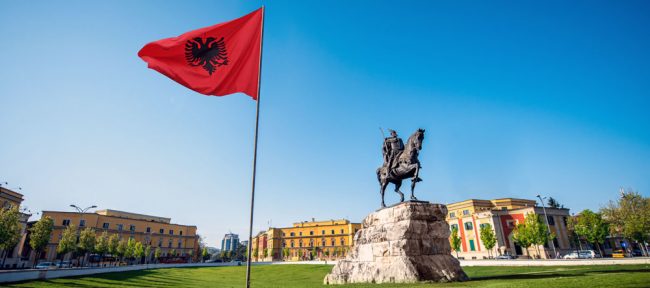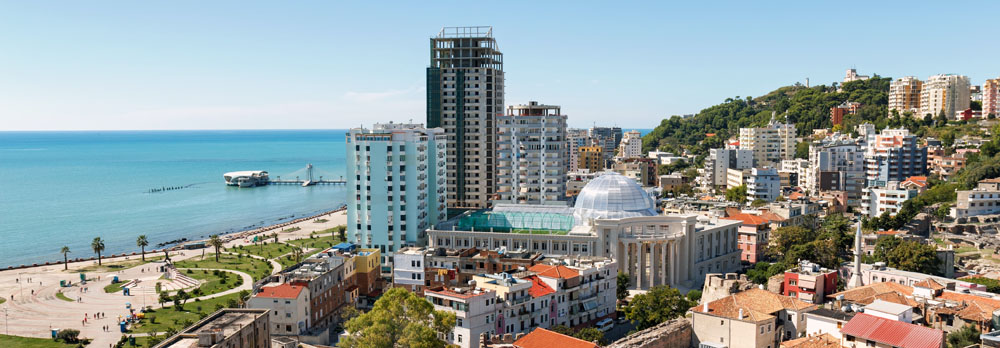
Whether you want to photograph unique architecture or go into nature, Albania is the place to do it.
With Balkan Tales, you can explore Albania on a private tour, or include it in your multi-country tour – we will adjust the itinerary so that you get see the best of Albania!
What we deliver with each tour is:
- Charm and positivity as our tour guide takes you through rarely seen spots!
- Excellent time management so you’re always on schedule and still have the time to see it all at your own pace.
- Assistance in every situation so you get more out of your interactions with locals.
Read further to acquaint yourself with 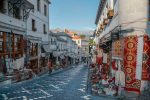
Local Currency: Albanian lek
Population: 2.863 million
Religion: Muslim 56.7%, Roman Catholic 10%, Orthodox 6.8%,
Language: Albanian
Who needs Visa: check if you need a visa here
If you already have a special wish, write to Balkan Tales and you can be certain it will be part of the itinerary.
Cities to stay
Tiranas monuments are numerous, among them are the Orthodox Cathedral, the Ethem Bey Mosque from the 18th century, the Mother Albania statue, etc.
The Dajti Mountain National Park nearby is a must visit place. Its highest peak rises to 1,613 metres. The mountain is covered with forests of pines and oaks.
Recommended by Balkan Tales
Restaurant: ODA
Hotel:
Must see – Mother Albania Monument, BUNK’ART, Walking city tour with a local guide
Berat – the town of a thousand windows
Berat is the best preserved Ottoman-era city in Eastern Europe. It is a fascinating museum city in Albania.
- In 2008 its old town was included among UNESCO’s Heritage Sites.
Durrës
Second largest city in Albania, Durres is the largest port in Albania and serves as the center of commerce for Tirana.
- Durrës is on the Adriatic sea coast and is one of Albania’s most ancient cities.
- It was founded by colonists from Ancient Greece.
- Located at a very narrow point of the sea, it combines marine charm with a diversity of architectural styles.
Krujë
The fortress city and the birth place of the national Albanian hero Skënderbeg.
- Krujë is very near the capital Tirana, spectacularly located between the mount of the same name and the Ishëm river.
- It was important in the country’s history, and was even the capital of the Kingdom of Albania for a certain period.
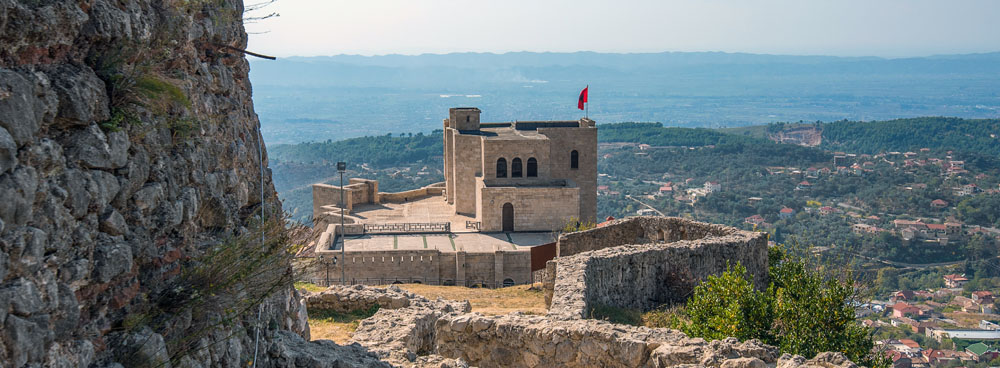
Saranda
The capital of the Albanian Riviera, located on the border with Greece.
- Saranda, or Sarandë, is famed as a great touristy spot on the country’s Riviera.
- It lies between hills, in a valley reaching an Ionian Sea gulf, in the Mediterranean’s central area.
- Three rivers cross the city and flow into the Ionian Sea.

Vlorë – the old capital of Albania
- Vlorë, the second most important Albanian port, is on the Adriatic Sea.
- Sea and vegetation lend appeal, with numerous gardens and with olive groves.
- The city was founded by Ancient Greeks as their colony and now boasts over 26 centuries of history.
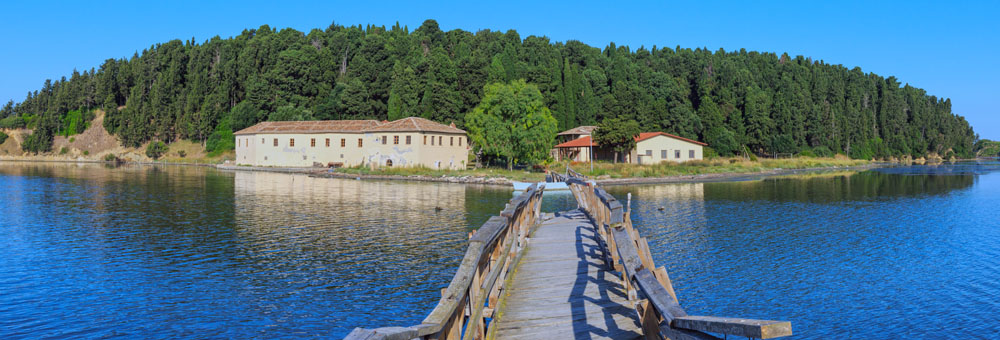
Places to visit
Places to visit in Albania
Make sure you include these attractions in your Albania tour itinerary.
Kruja and Sari Salltik Hiking Tour from Tirana
- The Ethnographic Museum is in a villa built in 1764, and boasts artisanal objects, some of them dating from about 500 years ago.
- The Skanderbeg Museum was constructed in the vicinity of the Kruja castle.
- Near Kruja, the Sari Salltik cave was the home of a dervish in the 13th century.

Vlora and Orikum
- Visit Vlora’s 12th century Marmiroi Church and the Muradie Mosque dating from the 16th century.
- The Vlora Bay is the border between two seas, the Adriatic and the Ionian.
- The stunning view unfolding from Orikum on the entire bay is picture perfect.

Orikum, at 15 km from Vlora, was also founded in the 6th century. The beach is long, covered with fine pebbles. From Orikum, the road leads to the Llogara National Park, with fascinating wildlife.
Krujë
- The Skanderbeg museum will tell the story of battles against Ottomans.
- The National Ethnographic Museum’s collection is mainly dedicated to artisanal products.

Koman Lake
- Three rivers feed the lake: Drin, Shala, and Valbona
- The narrowest gorge is surrounded by slopes rising almost vertically.
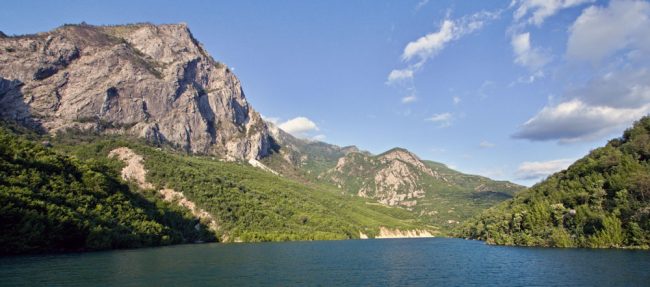
Take the ferry from Koman to Fierza, which is another reservoir type lake, for two and a half hours of observation of the magnificent landscape.
Pogradec
- Enjoy Ohrid Lake’s beauty by visiting Pogradec.
- Come on 21 June for the Lake Day, or for the film food festival in September, or for the wine fest in December.

The local landmarks are the castle’s ruins, located over the lake, and the historical center.
Mount Dajt
- This mountain is a natural landmark, high 1613 meters.
Dajt, a national park since 1966, has lots to fascinate with. Animals like wild boars, brown bears, red foxes inhabit the park. You can reach it by a gondola lift from the east.
Albanian Riviera
- The Albanian Riviera spans the Ionian sea coastal section in the Vlorë county.
- For elite holidays, with busy nightlife, this is the suitable area.
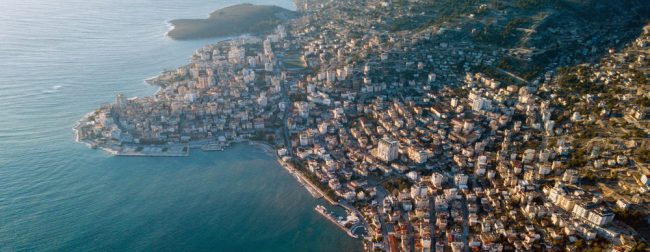
Skadar lake
- Skadar is a lake famed as the largest on the Balkan Peninsula; one third belongs to Albania.
- The lake is connected with the Adriatic via the Bojana river, and with the Ohrid lake via the Drin river.

Gjirokastër Castle
- This is a former fortress, dominating the Gjirokastër town.
- It stands at a height of 336 meters and overlooks the route crossing the valley.
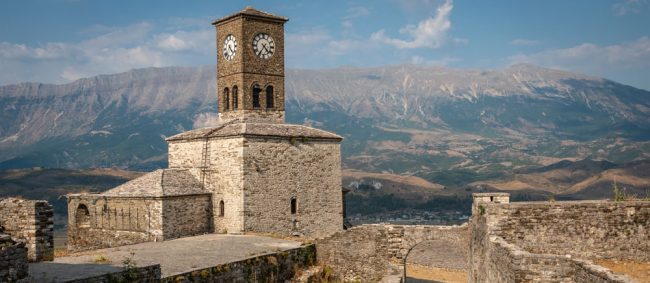
Bunker villages
- The 750,000 bunkers, built by a former Albanian leader Enver Hoxha can be found in the villages, fields, and even on beaches.
- The number of bunkers is such that there is one to four citizens of Albania. Some of them are populated, used as homes or hotels.
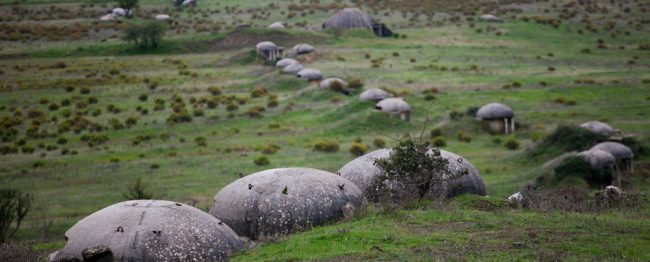
UNESCO
UNESCO sites in Albania
Cultural:
- Butrint
- Historic Berat and Gjirokaster
- Durres Amphitheater
- Royal Tombs of Seleca
- Ohrid Region Heritage Sites
Albanian Intangible Cultural Heritage
Albania in Balkan Tour Itineraries
Take a look at our suggested balkan tour Itineraries, already containing Albania.
It’s Easy to Include Albania in Your Tour!
All you have to do to add Albania to your guided Balkan tour is to describe what you expect of your tour by email.
Do not hesitate to contact us with all your requirements, and we will put together a private tour of Albania according to your interests, pace and arrivals dates.
LET'S START PLANNING YOUR TOUR!
Our tours are private and customized around your interests

